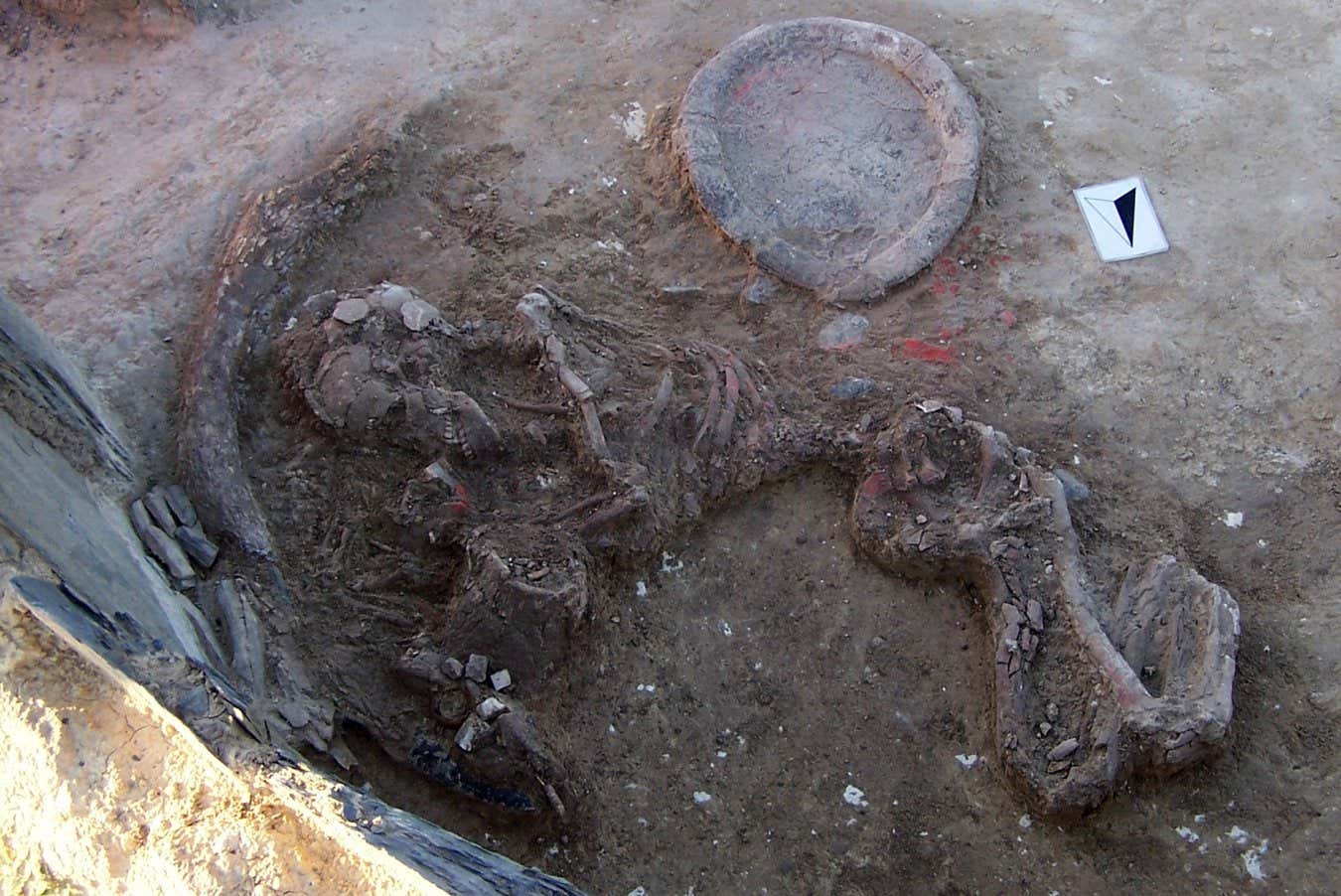Molecular evidence has revealed that a person buried with lavish goods over 4000 years ago was female, not male as previously thought
By Chen Ly
6 July 2023
The skeleton of a Copper Age person found at Valencina, Spain, dubbed the Ivory Lady
Research group ATLAS, University of Sevilla
One of the most prominent figures in a Copper Age Iberian society was female, not male as originally thought, according to molecular analysis of their teeth.
The Iberian Copper Age dates back to roughly 4000 to 5000 years ago and is marked by the emergence of copper smelting in what is now Spain and Portugal.
In 2008, archaeologists at Valencina in south-west Spain – one of the largest Copper Age sites in Europe – unearthed the remains of an individual whose tomb was adorned with lavish goods, such as an ornate rock crystal dagger and ivory objects including an African elephant tusk.
Advertisement
They were also buried alone, unlike most people at the time. “This suggests that the individual was probably the highest status of their time in the Iberian peninsula or even western Europe,” says Leonardo García Sanjuán at the University of Seville in Spain.
Based on an analysis of the skeleton when it was first uncovered, researchers deduced that this individual was probably male and was between 17 and 25 years old.
But García Sanjuán and his colleagues have now determined that the figure was in fact female, based on a protein called amelogenin found in tooth enamel. Amelogenin is encoded by two genes called AMELX and AMELY, which are found on the X and Y chromosomes respectively. People produce different versions of amelogenin depending on which sex chromosomes they have, so analysis of the protein can reveal someone’s sex.
